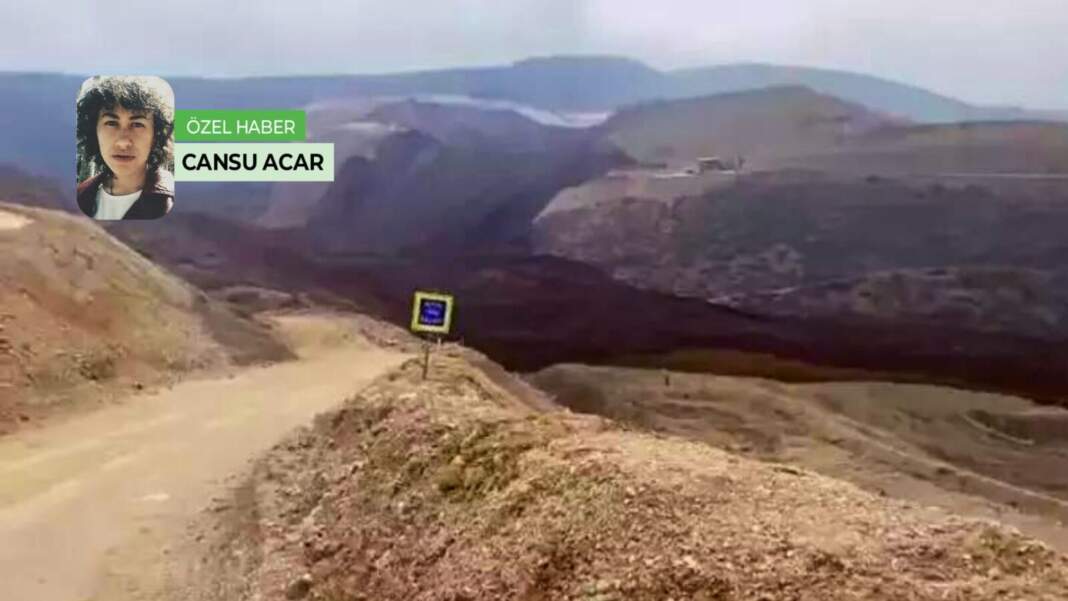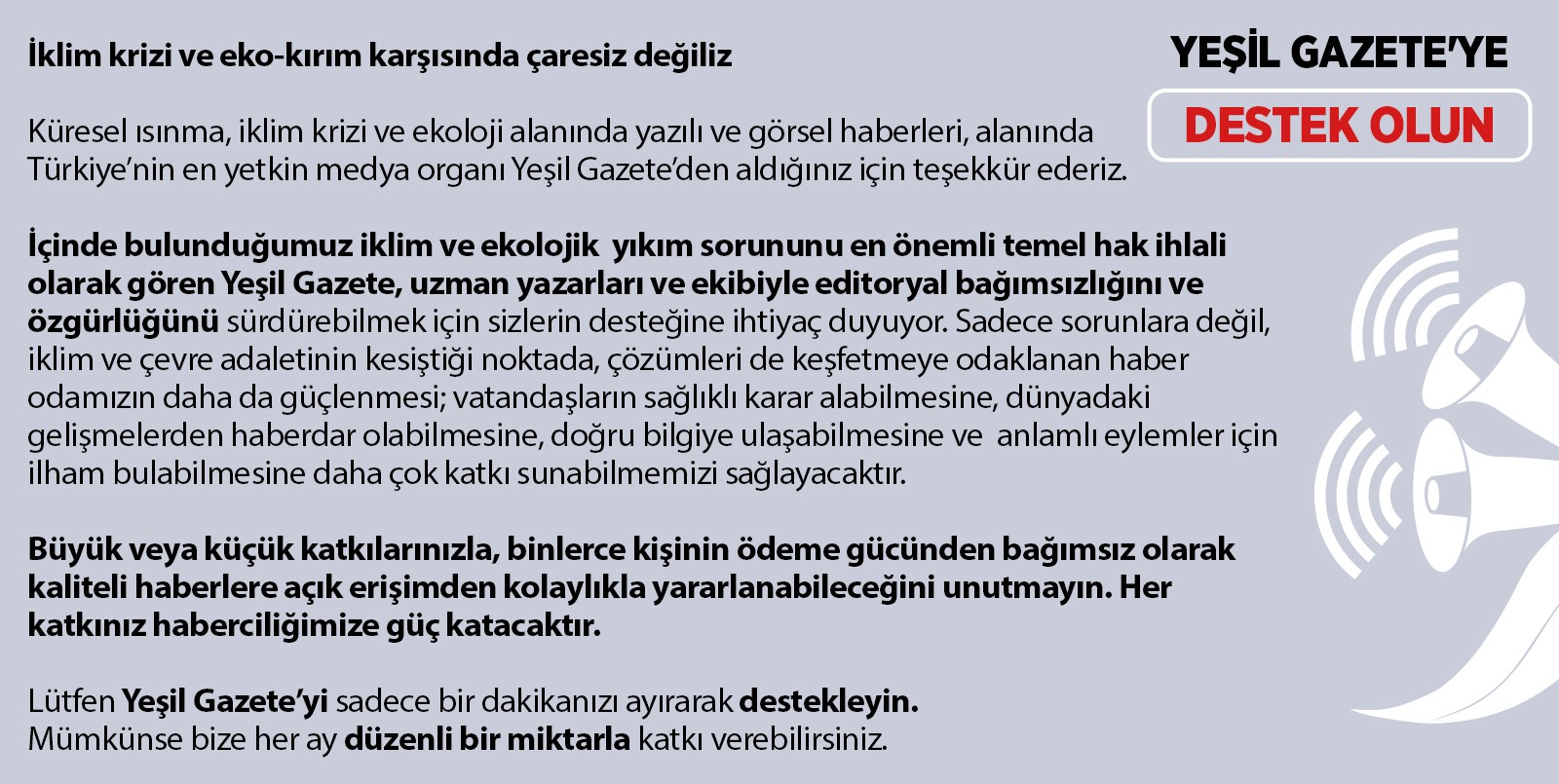In the Çöpler Gold Mine owned by Anagold Mining and Çalık Holding at İliç, Erzincan, a slide occurred in the leaching area where the cyanide-separated piles are collected during the gold ore extraction process. According to official statements, at least nine people were trapped under the sliding pile. In the company’s second capacity increase application, it was stated that the leaching area planned to be more than doubled.
Erzincan Governor Hamza Aydoğdu described the incident as a landslide, while Anagold said in a statement that a slide occurred in the leaching area. Due to cyanide leaching at the İliç Gold Mine, the heap in question poses a great threat to living life. The mine is also adjacent to the Euphrates River. The river near the tailings area is about two kilometers from the cyanide pond.
‣ Landslide at Iliç Gold Mine: At least nine workers under ground
‣ Professional organizations: Invitation to tragedy in Çöpler
According to the mine’s final EIA file dated 2019, the size of the leach site was 853 thousand square meters.

In the mine’s open pit expansion application file dated June 2, 2023, it is stated that the size of the leach area is 607 thousand 492 square meters. With the second capacity increase, the total heap leach area size will be 1 million 887 thousand 925 square meters.
On the other hand, the company’s latest project file contains the following statements regarding the presence of cyanide in the leach pile:
In the Çöpler Project, oxidized ore is subjected to crushing, screening and grinding processes and then subjected to a leaching process using sodium cyanide to extract the gold and silver.
Interior Minister Ali Yerlikaya said, “8-10 decares of land mass spread over an area of 100 decares.”
TTB warned three years ago: Cyanide leaching must be strictly banned
Two years ago, we warned against the mine by including scientific reports in our news article. Here are those reports:
In the report shared by TTB on May 25, 2021 on the subject, “Cyanide mining activity consists of four main stages: Exploration, stripping and blasting, grinding and cyanidation, and waste storage. All these stages of mining involve different threats to nature and human health. Cyanide leaching, which is a toxic chemical that threatens biodiversity, freshwater and human health, should be strictly banned.”
On the other hand, the Turkish Thoracic Society issued an official statement on July 24, 2017. In the statement, it was emphasized that almost all of the materials to be used in the plant are risky for human health and ecological life.
“While some of them (e.g. quartz-containing sand) pose a risk only for workers’ health (silica causes silicosis, is known to be carcinogenic), most of the substances have the potential to have a negative impact on workers’ health, people in the environment and ecological life,” the Turkish Thoracic Society said in its opinion.
The statement added: “Considering the proximity of the region to the Euphrates River, it is not possible to foresee the extent of the environmental disaster that a possible leakage and destruction risk could cause.”
The comment of Prof. İsmail Duman from ITU on the EIA report was similar to the other two statements.
Prof. Dr. İsmail Duman stated that the main environmental risk is caused by the heavy metals mobilized by cyanide, especially the compound Arsen (AS) is present in the aqueous phase and these are dangerous poisons and said: “The acute effect of Arsen, also known as rat poison, is lethal when taken in excessive amounts. Its chronic effects are as follows: skin cancer, sensory impairment, loss of reflexes and depression, anemia, heart failure, blood cancer, cancer of the lymphatic system, liver tumors, congenital disabilities, babies born with incomplete development, lung cancer, kidney failure and mental illness.”
“The slightest carelessness and inexperience can lead to irreparable disasters,” Duman said, emphasizing that the water in the Euphrates River and the dams would become unusable for years, which would mean the end of agricultural production.
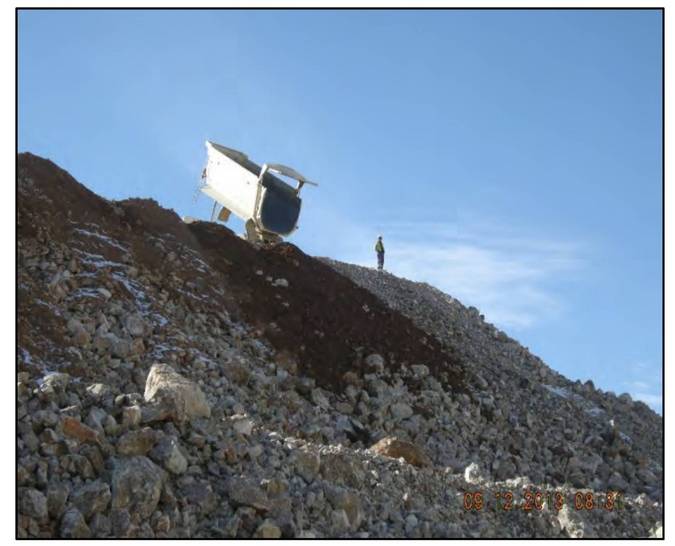
Waste site quadrupled in 2021
In 2010, gold production with cyanide was started at the mine, which started drilling in 2001. In 2019, sodium cyanide was increased to 11 thousand tons and sulfuric acid production to 122 thousand tons. In the report published in 2021, 18 hazardous substances were included. These include hazardous substances such as sodium cyanide, nitric acid, copper sulfate, sodium hydrosulfite, which cause severe burns, corrosive effects, skin and eye irritation to respiratory tract, aquatic organisms, severe burns, corrosive effects, and extreme irritation to the skin and eyes.
‣Euphrates River will die if the gold mine increases its capacity
The first EIA studies for the Çöpler Complex Mine were conducted in 2007-2008 and the EIA report was given an “EIA Positive” decision on April 16, 2008.
The EIA Report issued for the mine in 2008 stated that 100 million tons of rock and 52 million tons of ore would be extracted during the 18-year operations. However, the figures increased over time. In the EIA report in 2014, the amount of rock was increased to 173 million tons. By 2021, the figures had quadrupled, with rock increased to 420 million tons and ore to 85.3 million tons.
İsmail Hakkı Atal, the lawyer of the lawsuit filed against the previous capacity increase at the Çöpler Gold Mine in İliç, told Yeşil Gazete, “The pile of waste has collapsed. Of course it is toxic mud. Therefore, it will mix with rain and groundwater.”
Rainfall is expected in the region starting today.
Atal said, “When they collect the waste in one place, they lay a membrane or something underneath it, but when that waste is dispersed, when rainwater gets on it, all the heavy metals and elements in it will mix with the groundwater, and somehow it will mix into the food chain by evaporation.”
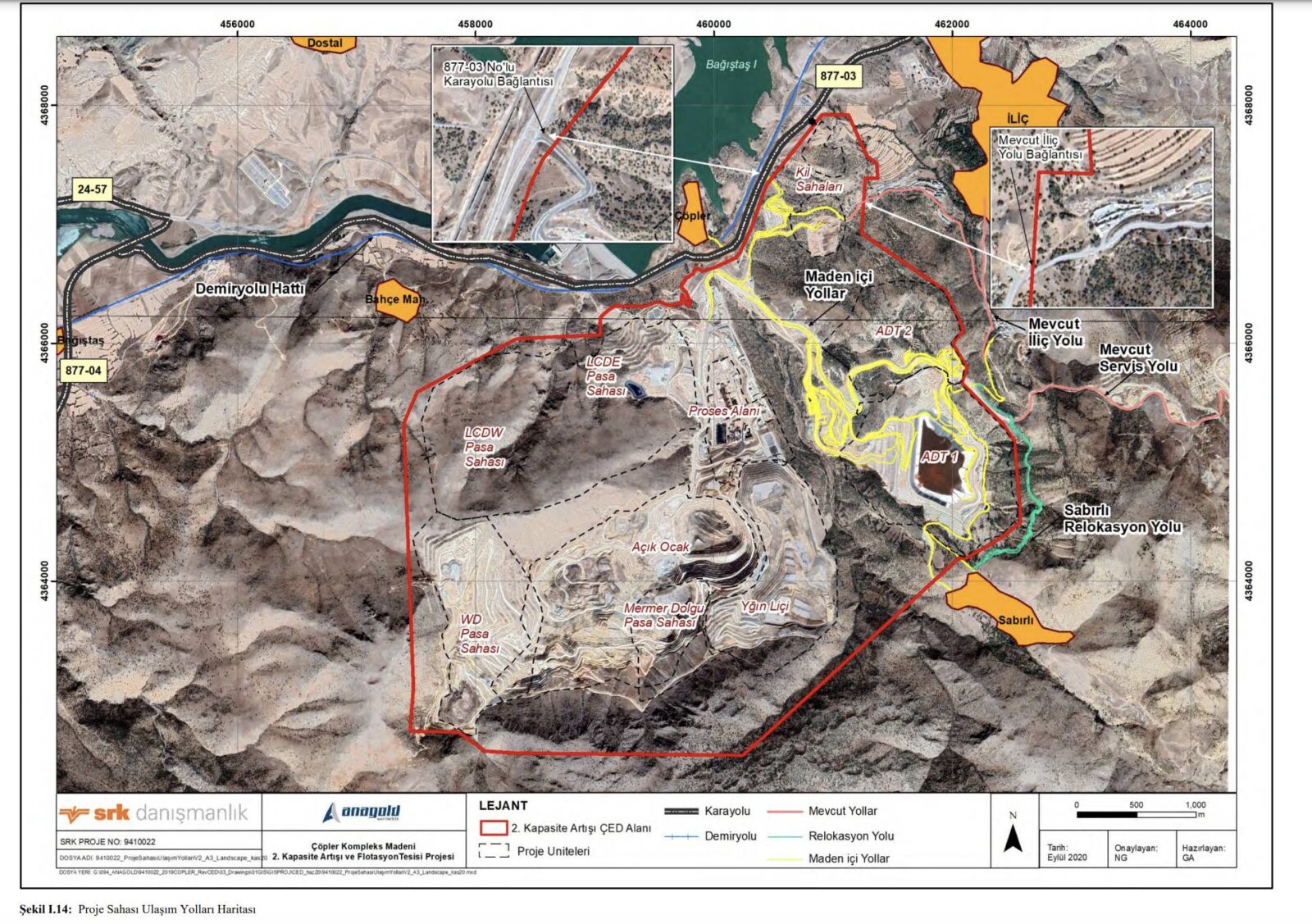
‘It is necessary to shut down the mine’
Regarding the company’s statement that it has activated its emergency plan, Atal said, “Even if it activates its emergency plan, nothing will happen. After this hour, this disaster has shown its end. It is necessary to take a lesson from this and shut down this mine immediately. There is no other solution. We already knew something like this was going to happen. Science was telling us this. For example, when there was a 4.2 magnitude earthquake on the Bingöl Yedisu fault line at the beginning of May, we applied to the Erzincan Governor’s Office on May 30, 2022. They did nothing,” he said.
Following May 2022, a cyanide leak occurred at the same mine on June 21, 2022 when a pipe with cyanide solution broke. Atal made the following statements regarding the cyanide leak in question:
“80 kg of cyanide went all the way to the Euphrates at that time. So the science is clear. If you pile tens of millions of tons of soil somewhere by disrupting the balance/structure of the earth’s crust by saying ‘no, I have taken all kinds of precautions’, that soil is bound to disintegrate one day.”
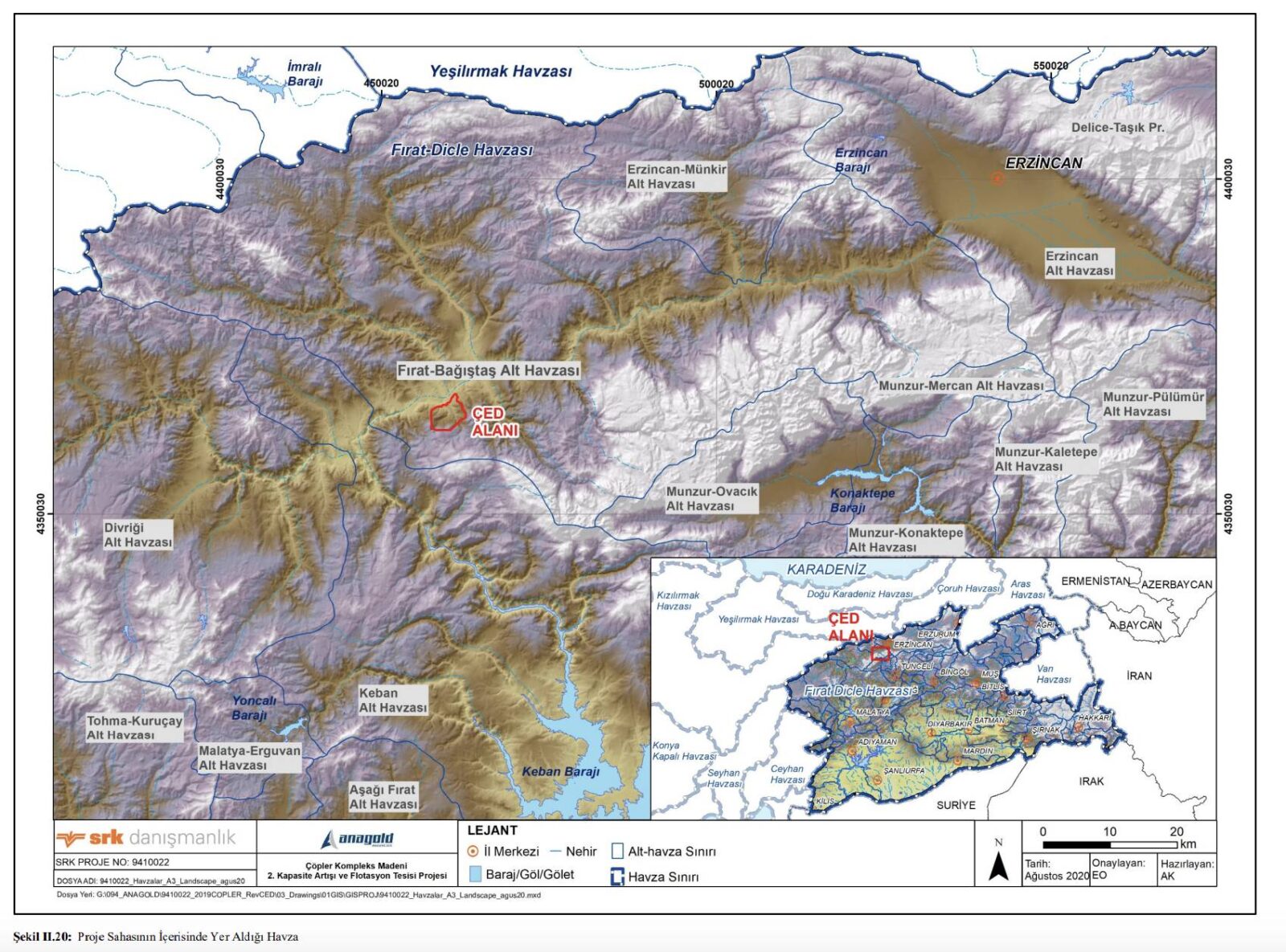
‘We need to get rid of this government as soon as possible’
Previously, in July 2022, an expert discovery was made at the site to determine whether the Çöpler Gold Mine was located on a fault line. Sedat Cezayirlioğlu, the plaintiff Sedat Cezayirlioğlu and his volunteer lawyer İsmail Hakkı Atal, who announced the activities of the cyanide-spewing company in Erzincan and fought for this for years, were not taken to the discovery. Underlining that they drew attention to seismicity in the discovery, Atal said:
“We mention all kinds of possibilities, from rust to cyanide pools, but… Therefore, Turkey is no longer even a state of law, as we experienced in Akbelen. We need to get rid of this government as soon as possible.”
The experts chosen for the mine’s survey had been challenged: AKP member defends mine
In September 2023, objections were raised to the experts chosen for the survey to be conducted as part of the lawsuit against the expansion of the gold mine’s capacity. Some of the experts were from the AKP, some were not experts in their field and some were gold mine proponents. The reasons for the objections were as follows:
- We initially rejected Prof. Dr. Serhat Vançelik, a public health expert, as he was Erzurum Provincial Health Director for 10 years between 2007 and 2017 and close to the AKP government.
- In the Anagold mine investigation file of former Erzincan Chief Public Prosecutor İlhan Cihaner, it was documented in the records of the Ministry of Justice in 2009 that the bribe exchange between the fugitive FETÖ prosecutor Bayram Bozkurt and the Anagold company was made through the law office of the son of former AKP Justice Minister Mehmet Ali Şahin. On the other hand, since Çalık Holding is a 20 percent shareholder of the Canadian-American gold mine (SSR mining) Anagold company and Çalık Holding is close to the AKP government, it is clear that the report to be given by the AKP public health expert Prof Dr Serhat Vançelik will not be impartial, so with our objection, we requested the Ministry of Justice General Directorate of Criminal Affairs to subpoena the investigation file prepared by İlhan Cihaner.
- On the other hand, since the court appointed a ‘hydraulic engineer‘ expert when it should have appointed a ‘hydrogeologist‘ expert, we objected to this expert, to the meteorological engineer and geological engineer who do not have the qualification of faculty member in violation of the Council of State reversal, to Prof Dr İbrahim Alp, a mining engineer who is an unconditional gold mine propagandist, to Prof Dr İbrahim Alp, an environmental engineer who owns private companies and does business with mining companies. Dr Okan Tarık Komesli, who does not have sufficient studies in the field of seismology and whose academic title is geophysicist, not seismologist, and Prof. Dr Nafiz Maden, who is an expert witness, and requested the postponement of the discovery.”
The substances have hazardous effects on the respiratory tract, aquatic organisms, skin and eyes
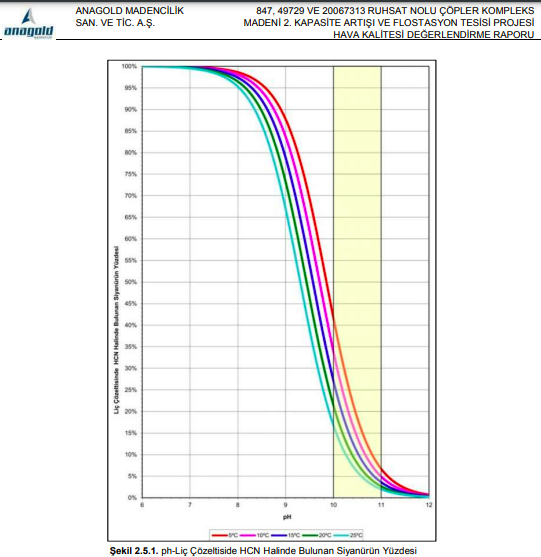 In 2010, gold production with cyanide was started at the mine, which started drilling in 2001.
In 2010, gold production with cyanide was started at the mine, which started drilling in 2001.
In 2019, sodium cyanide was increased to 11 thousand tonnes and sulfuric acid production to 122 thousand tonnes.
In the report published in 2021, 18 hazardous substances were included. These include hazardous substances such as sodium cyanide, nitric acid, copper sulphate, sodium hydrosulphite, nitric acid, copper sulphate and sodium hydrosulphite, which cause severe burns, corrosive effects, skin and eye irritation to the respiratory tract and aquatic organisms.

